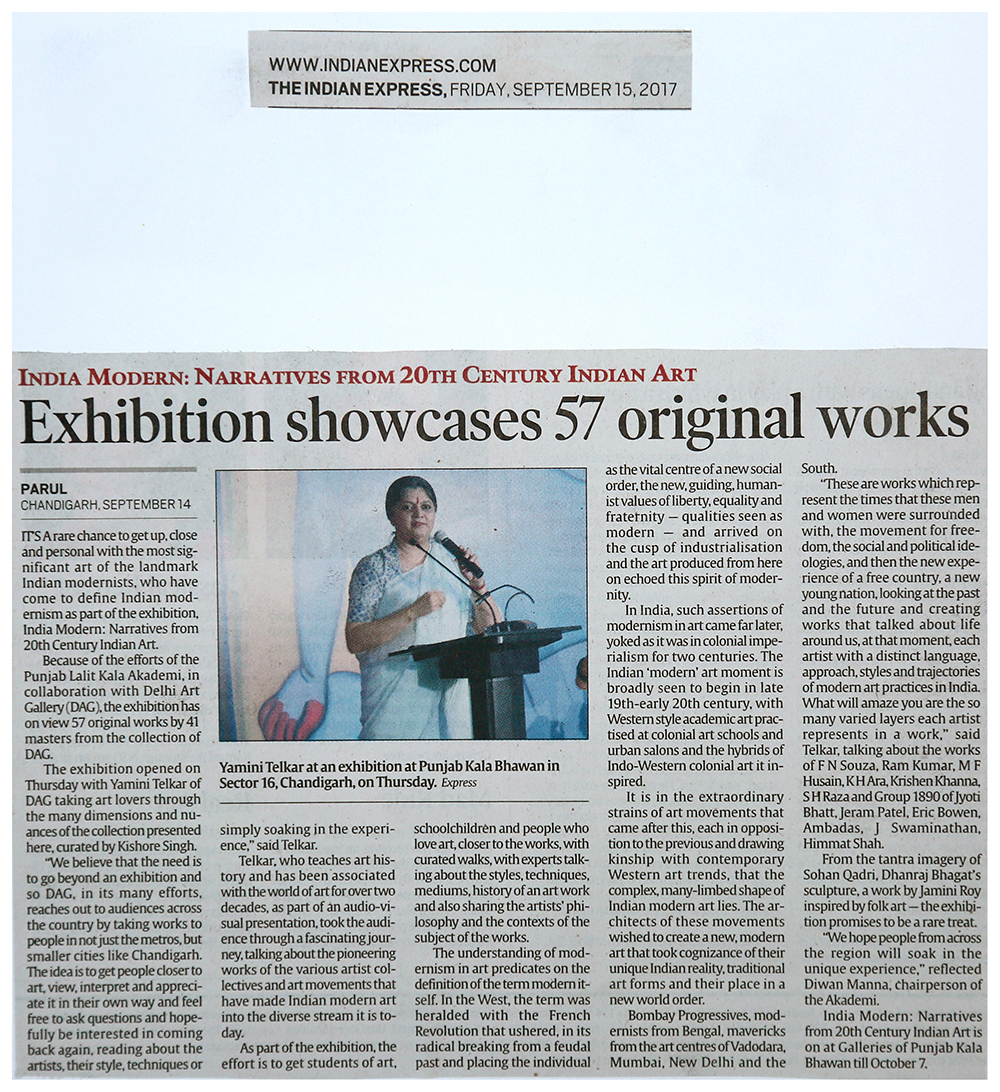India Modern: Narratives from 20th Century Indian Art is on at Galleries of Punjab Kala Bhawan till October 7
It’s a rare chance to get up, close and personal with the most significant art of the landmark Indian modernists, who have come to define Indian modernism as part of the exhibition, India Modern: Narratives from 20th Century Indian Art. Because of the efforts of the Punjab Lalit Kala Akademi, in collaboration with Delhi Art Gallery (DAG), the exhibition has on view 57 original works by 41 masters from the collection of DAG.
The exhibition opened on Thursday with Yamini Telkar of DAG taking art lovers through the many dimensions and nuances of the collection presented here, curated by Kishore Singh. “We believe that the need is to go beyond an exhibition and so DAG, in its many efforts, reaches out to audiences across the country by taking works to people in not just the metros, but smaller cities like Chandigarh. The idea is to get people closer to art, view, interpret and appreciate it in their own way and feel free to ask questions and hopefully be interested in coming back again, reading about the artists, their style, techniques or simply soaking in the experience,” said Telkar.
Telkar, who teaches art history and has been associated with the world of art for over two decades, as part of an audio-visual presentation, took the audience through a fascinating journey, talking about the pioneering works of the various artist collectives and art movements that have made Indian modern art into the diverse stream it is today.
As part of the exhibition, the effort is to get students of art, schoolchildren and people who love art, closer to the works, with curated walks, with experts talking about the styles, techniques, mediums, history of an art work and also sharing the artists’ philosophy and the contexts of the subject of the works.
The understanding of modernism in art predicates on the definition of the term modern itself. In the West, the term was heralded with the French Revolution that ushered, in its radical breaking from a feudal past and placing the individual as the vital centre of a new social order, the new, guiding, humanist values of liberty, equality and fraternity — qualities seen as modern — and arrived on the cusp of industrialisation and the art produced from here on echoed this spirit of modernity.
In India, such assertions of modernism in art came far later, yoked as it was in colonial imperialism for two centuries. The Indian ‘modern’ art moment is broadly seen to begin in late 19th-early 20th century, with Western style academic art practised at colonial art schools and urban salons and the hybrids of Indo-Western colonial art it inspired.
It is in the extraordinary strains of art movements that came after this, each in opposition to the previous and drawing kinship with contemporary Western art trends, that the complex, many-limbed shape of Indian modern art lies. The architects of these movements wished to create a new, modern art that took cognizance of their unique Indian reality, traditional art forms and their place in a new world order.
http://indianexpress.com/article/cities/chandigarh/india-modern-narratives-from-20th-century-indian-art-exhibition-showcases-57-original-works-4844587/

